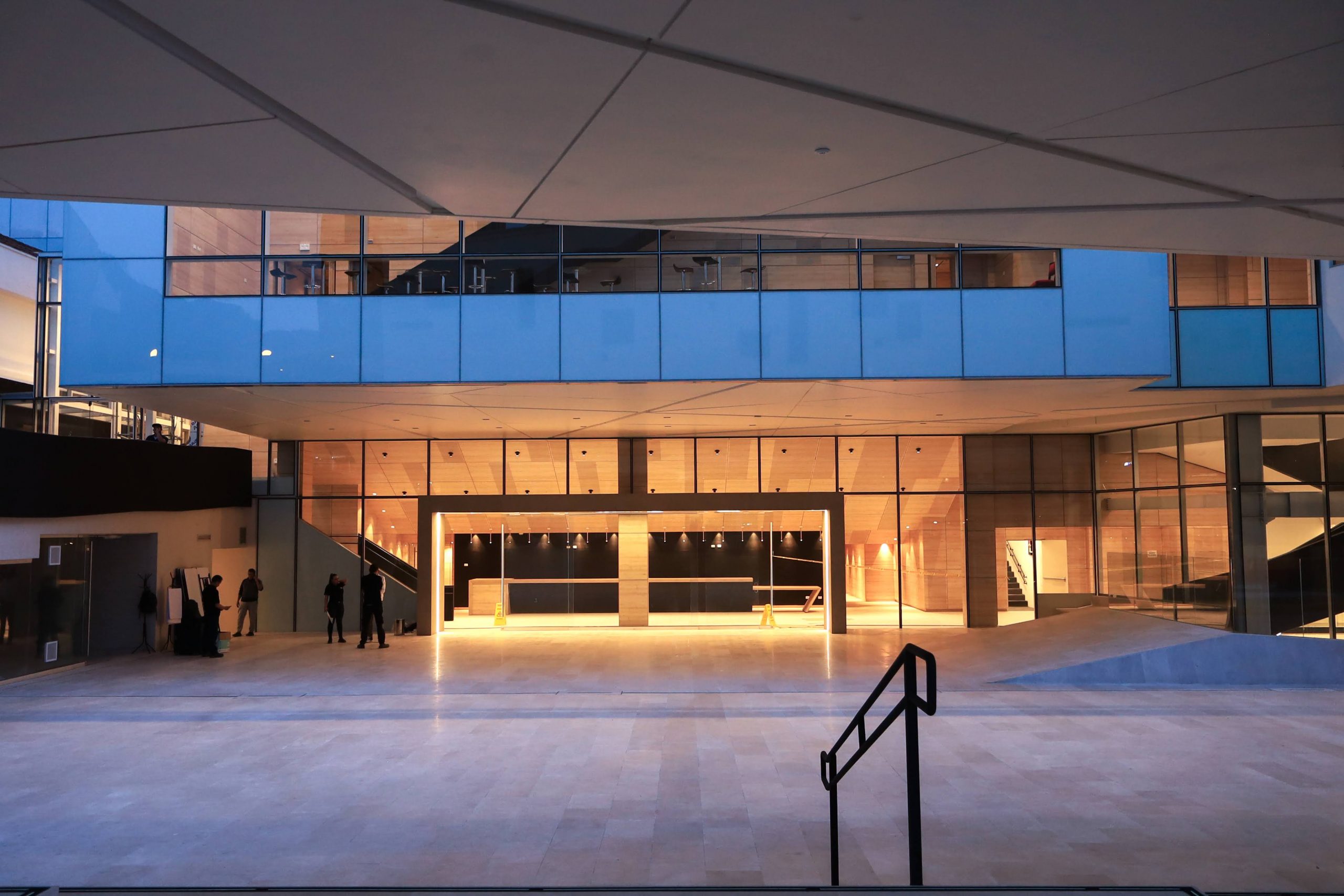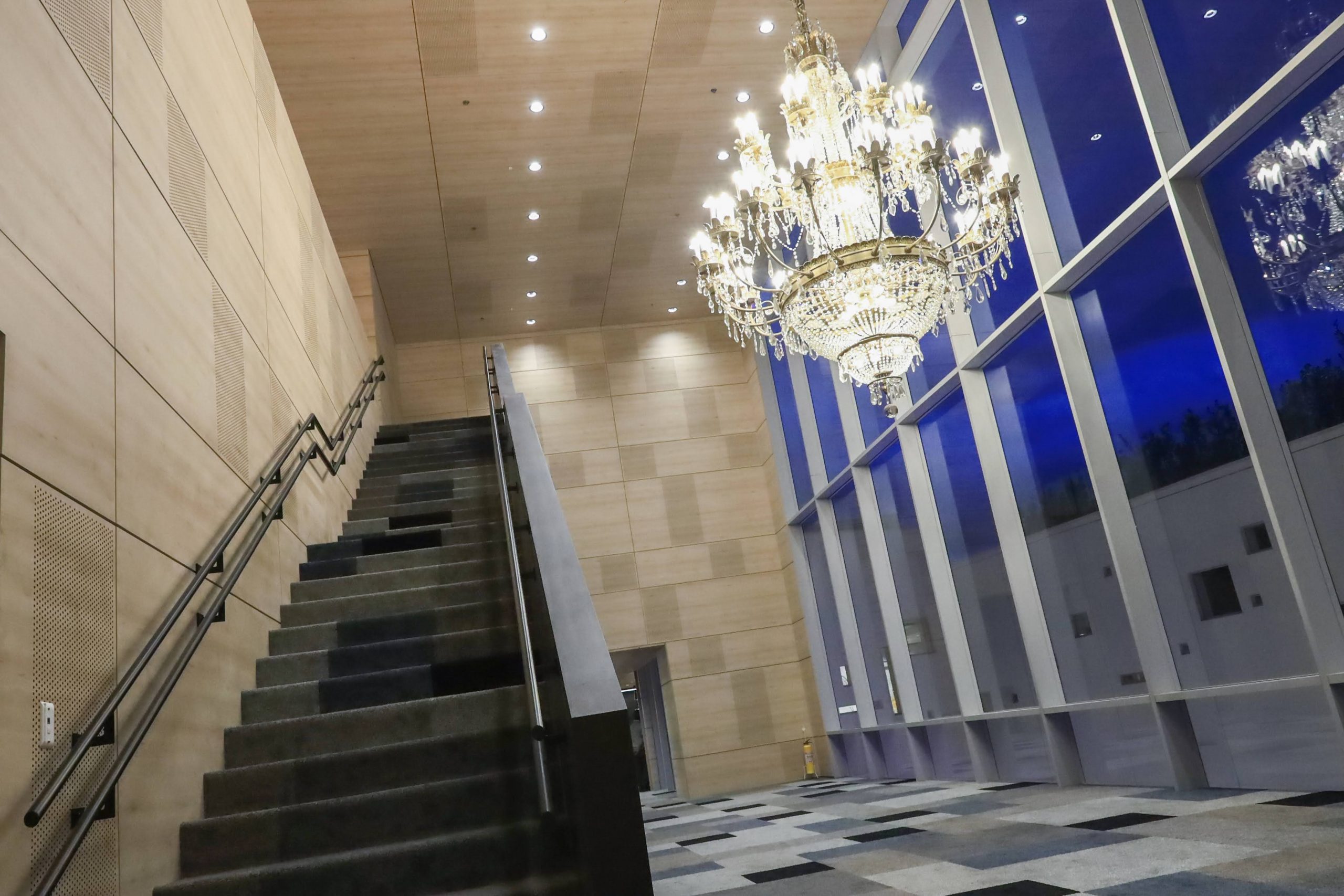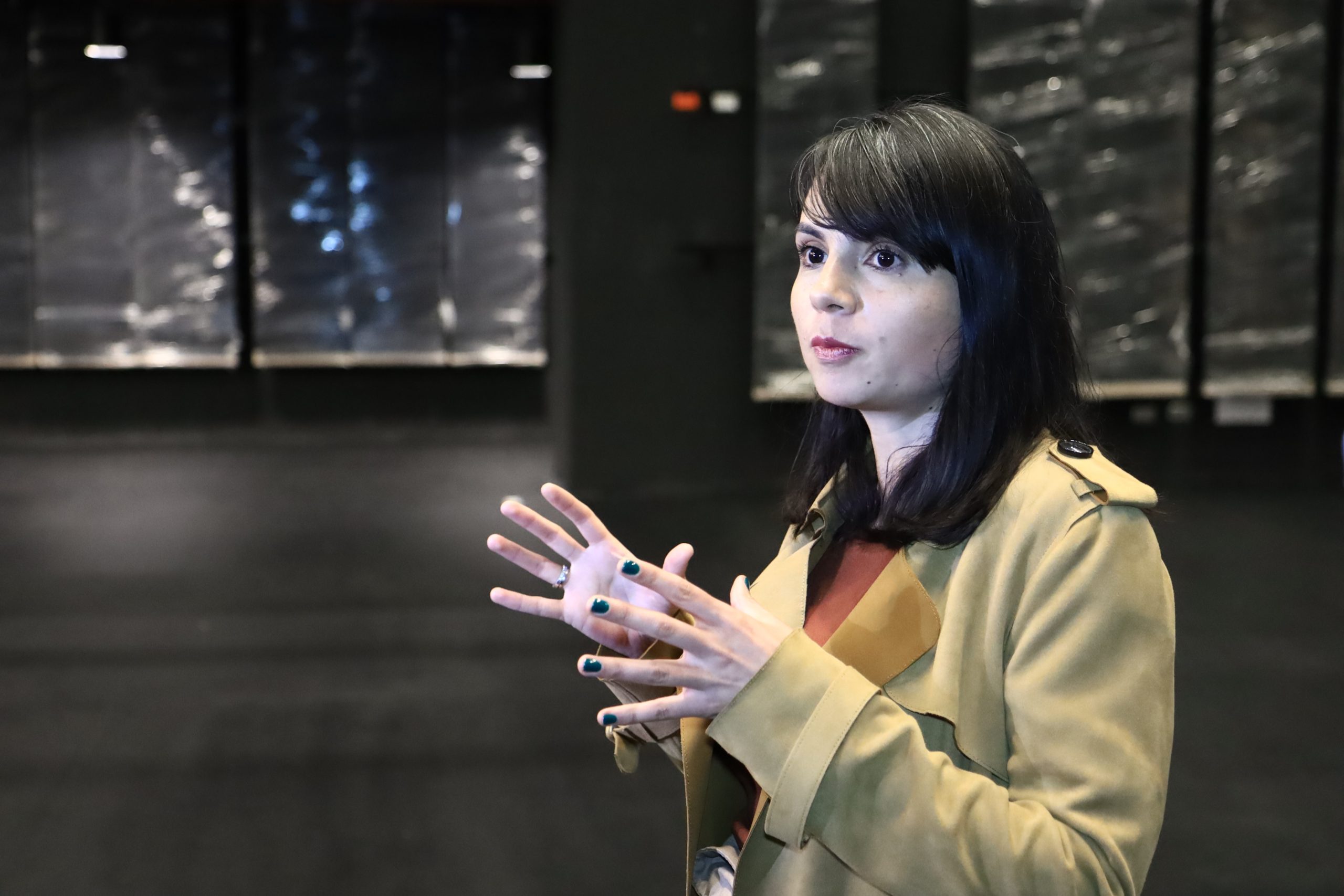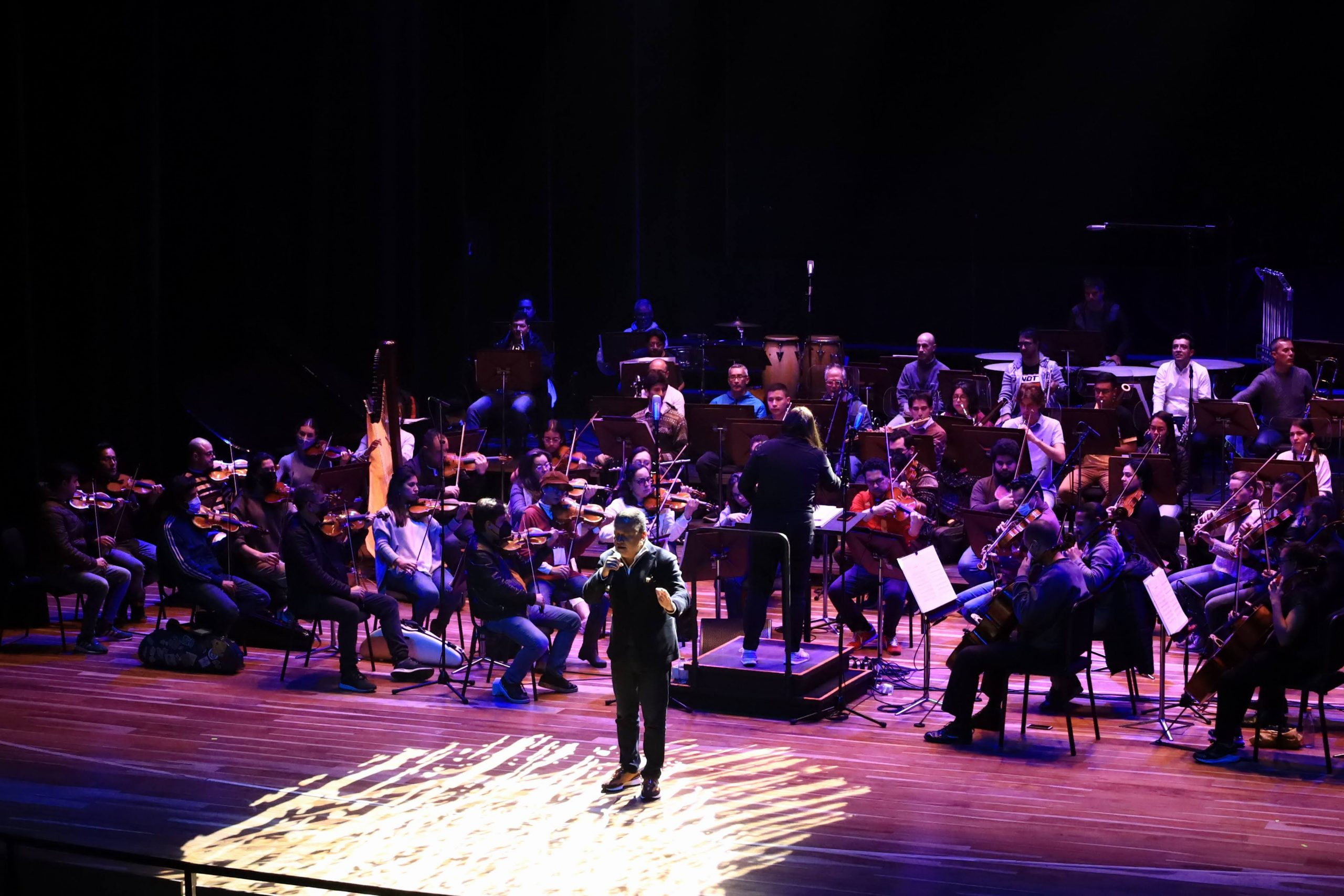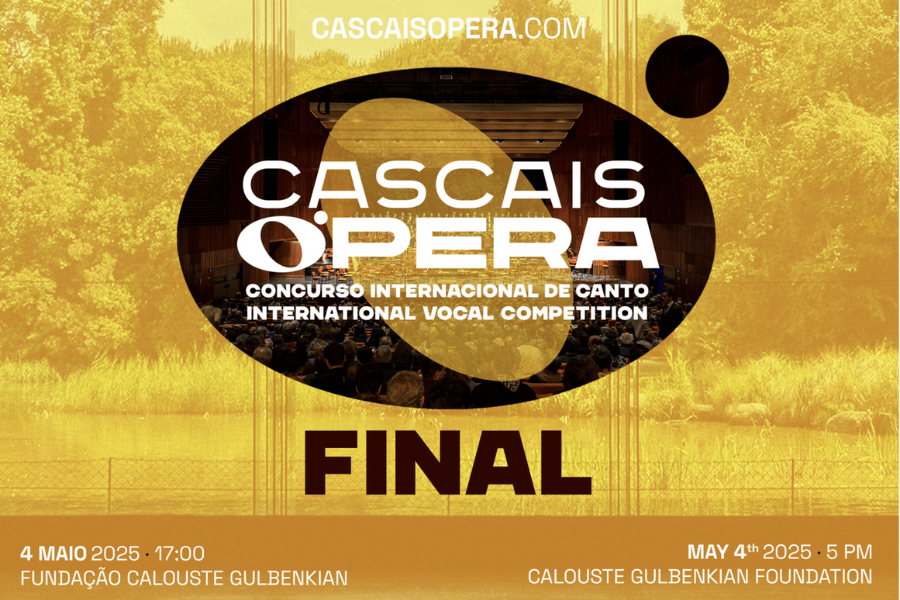The National Center for the Arts is inaugurated at the Teatro Colón in Bogotá
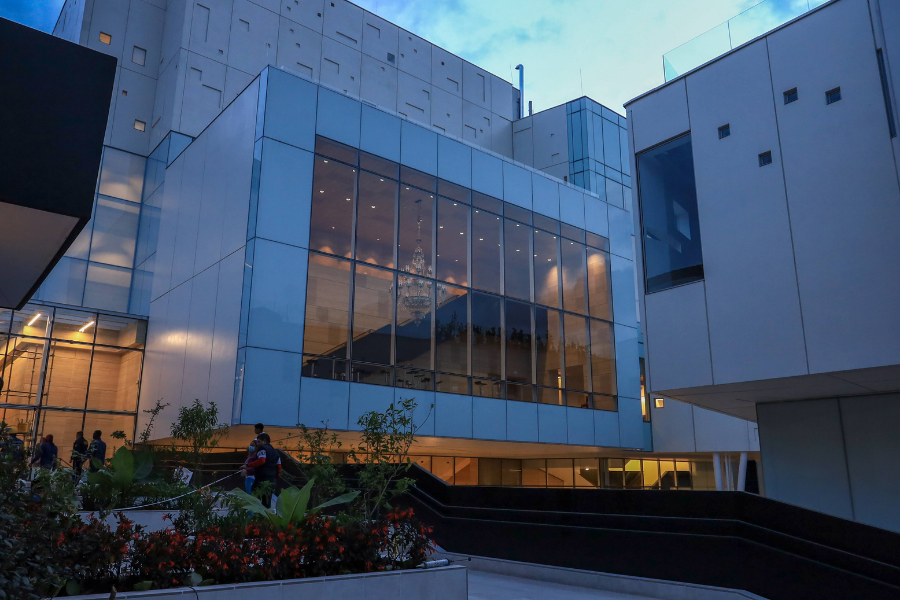
The new National Center for the Arts, the largest cultural venue in Colombia, has more than 17,000 square meters of space. Three rooms, one of them in homage to the legendary dancer and cultural manager Delia Zapata Olivella; the experimental room called Fanny Mickey and a rehearsal room for symphonic orchestras. More than 1,500 national and international artists will benefit from this megaproject, which expects to receive more than 50,000 spectators a year.
In Colombia, a new space is inaugurated for the meeting of the arts, creativity, dance, music, theater and that which unites us, culture. It is the National Center for the Arts, an imposing work of cultural infrastructure that attracts the attention of managers, cultural creators, artists and the expectant public to discover its three rooms and tour the more than 17 thousand square meters of spaces, that adorn this cultural center and make it a benchmark for the world.
“These are works that remain for the citizens and that remain for Colombia, and that allow this area to become the most important Orange Development Area in the country. Here we will not only have the Teatro Colón, the National Center for the Arts, but also the restored building Casa Liévano and we will have the Luis Ángel Arango Library and galleries, cultural centers and this will become one of the places with the greatest number of tourist visits not only in Colombia but in Latin America. Today all Colombians have to feel proud. Colombians must unite in a single purpose to make culture the most important hallmark of our country in the eyes of the world,” said President Iván Duque at the inauguration event.
This work, located two blocks from the Plaza de Bolívar, in the heart of Bogotá, whose historic center is a Cultural Heritage of the Nation, constitutes the most important cultural infrastructure development for Colombia in recent years. With an investment of more than 130 billion pesos, the National Center for the Arts consists of three rooms, equipped with the best technology for the staging of the symphony, plays and cultural projects of international stature.
“This is the most important and largest cultural infrastructure work that the Ministry of Culture has developed in its 25 years of existence, approximately 17 thousand square meters, with an investment of more than 130 thousand million pesos, which will consolidate this place as the space for the diffusion of national talent and especially, of the performing arts”, indicated the Minister of Culture, Angélica Mayolo.
The National Center for the Arts will become a meeting and cultural appropriation place where 1,500 artists will present large-format shows that will be welcomed by more than 50,000 spectators a year.
“We are convinced that with this cultural infrastructure, Colombia today has a great cultural center comparable to the best in Latin America, that it will become a great promoter of cultural tourism in our territory and that it will have an inclusive and diverse program with the objective to reflect the cultural richness of the Colombian territories. Together we will turn this National Center for the Arts into a great benchmark in Latin America and a powerhouse for cultural and creative industries,” added the Minister of Culture.
Sala Delia Zapata, tribute to the legendary dancer and cultural manager Delia Zapata Olivella
To allow multifunctionality, in the proscenium part there is a motorized orchestra pit, which is used to locate and distribute the musicians during opera and ballet productions. This also allows the stage to be enlarged or even to increase the seating capacity of the public. It has capacity for 511 seats, audio, video and lighting equipment for the creation, production and programming of large format shows.
Rehearsal room of the National Symphony of Colombia
It has an approximate area of 267 square meters for orchestras such as the Colombian National Symphony and has capacity for 100 spectators. It is a suitable space to serve as a recording studio for orchestras. From this room you can access a panoramic terrace overlooking the Historic Center of Bogotá, which has been declared Cultural Heritage of the Nation.
Fanny Mikey Experimental Room
The name of this emblematic room is a recognition of the manager and director who led Colombia to be one of the most important countries in production and programming of performing arts in Latin America. It has a space for 207 chairs, which will allow the viewing of works in flexible formats that integrate new technologies, with components of experimentation and creation.
The new three rooms of this National Center for the Arts will allow it to position itself as a benchmark for holding world-class cultural events. In its capacity it is compared to the San Martín Theater complex in Buenos Aires, the Gabriela Mistral Cultural Center in Santiago de Chile or the City of Arts cultural complex in Rio de Janeiro in Brazil, among others.
Training processes, promotion of new talents
Likewise, this National Center for the Arts will host training and mediation processes for the performing arts such as the ‘Diploma in Performing Arts’, in alliance with the Goethe Institute and the Cirquito Liquen dance company; and the laboratory orchestra of the Fundación Nacional Batuta with its three projects: Singing with the Basque Country, Paris Chamber Orchestra and Jazzy Christmas.
It also has suitable spaces to host training workshops in trades related to the performing arts such as makeup, shoemaking or costumes that will be complemented by the training activities that will be carried out in the set design workshop of the Teatro Colón, which was built on the premises of the old Las Sabana station and that are part of the actions dictated by the Policy for the Strengthening of the Trades of the Culture Sector in our country and Law 2134 of 2021 or Law of Cultural Trades.
Also, these new spaces will be the stage for the Bogotá Music Market in its 2022 edition, with a series of concerts and a meeting of programmers from the music industry.
El Telón de Boca, a look at history
El Telón de Boca will be a work of art by the Bogotá painter Pedro Ruíz. It is a portrait of Delia Zapata waving a ball gown that turns into a flower and surrounded by fishermen on a raft. This work, 12 meters long by 8 wide, was the winner of the call for proposals from the Ministry of Culture last December.
The Cantini Lamp
In the lobby of the new Delia Zapata Olivella room, the glass lamp was hung that was in the main room of the Teatro Colón until 2008 when the restoration of the theater began. This lamp was made at the time in Czechoslovakia and brought to Colombia on the occasion of the IX Pan-American Conference, which was held in Bogotá in 1948 and in the framework of which several events were held in the historic Teatro Colón. At that time, the lamp that had been designed by Luigi Ramelli and installed in the main room since 1892, was then replaced by this glass lamp that was considered more elegant and showy than the original.
By the end of the 20th century, its excessive weight and size were causing damage to the ceiling paint and reducing visibility from the gallery. For this reason and during the process of restoring the Teatro Colón, it was decided to return the first lamp to its original place and the glass lamp was kept in a deposit in the General Archive of the Nation, which will now be appreciated again by the public that attends the new Delia Zapata Olivella room.
Best cultural infrastructure
To minimize the project’s impact on the environment, four underground levels were built, which involved excavating 28 meters from the current level of the platform.
In the first block of the complex, more space is given to the dressing room area, in addition to adding technical services such as a forklift for large-format sets, costume and makeup workshops, light and sound laboratories, warehouses and a green room for the preparation of 150 people.
The artists will also have two warm-up rooms for dance and theater, in an area of 116 square meters, for rehearsals prior to performances. In building C of the National Center for the Arts there will be 44 parking spaces available, as well as spaces for a mezzanine with shops, a bar, a cafe and a restaurant, expanding the commercial and gastronomic offer of the Historic Center.
A restored colonial house
The Teatro Colón was declared in 1975 Cultural Patrimony of the Nation. Its new National Center for the Arts also integrates an asset of cultural and heritage interest: Casa Liévano. It is a building built in the colonial period and remodeled at the end of the 19th century following the guidelines of neoclassical architecture, a predominant stylistic inspiration of the time.
For several decades it was the headquarters of the Subdirectorate of Fine Arts of the Colombian Institute of Culture (Colcultura). Its most recent restoration was carried out during stage III of the project and ended in July 2019.
Exhibition of the National Network of Workshop Schools of Colombia
Likewise, in the Cultural Center of the Arts, you can see an exhibition of the National Network of Workshop Schools of Colombia, which brings together a sample of the products that are made thanks to the rescue and preservation processes of the country’s traditional trades. These initiatives are part of the work led by the Ministry of Culture through its National Program of Workshop Schools with the aim of strengthening the transfer of knowledge in the communities, promoting the enhancement of this knowledge through cultural tourism and the activation of entrepreneurship in the sector of traditional trades.
In the exhibition you will find products made by artisans, artisans, teachers and teachers who participate in this initiative in different regions of the country. For example, visitors will be able to find the hammocks of the Living Museum of the teacher Olivia Carmona of the Caribbean coast, as well as the products made with the Grass Varnish technique of the Workshop of the teacher Miguel de la Ruiz from Ipiales, Nariño.
Programming
The opening to the public and announcement of the programming will take place in the month of June and will include the Colombian dance company Sankofa, with the premiere in Colombia of its show ‘The complacent lie’; to the Music School of La Boquilla y Tambores de Cabildo; the singer-songwriter Martha Gómez: the National Symphony Orchestra of Colombia with seasonal concerts and the premiere of her production ‘Espiritu de Pájaro’, by the Colombian composer Diego Vega with the Cartagena company ‘El Colegio del Cuerpo’ and under the direction of Álvaro Restrepo.


